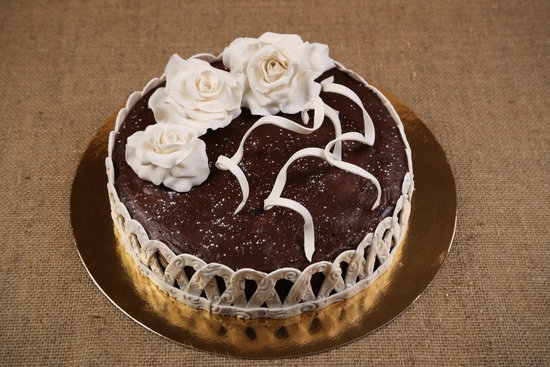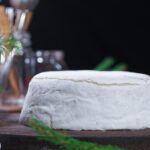Fruit decoration for cakes is not just about aesthetics; it also enhances the taste and overall appeal of a dessert. Using fresh fruits can bring a natural sweetness and vibrant colors to a cake, making it visually stunning and delicious. Whether you’re looking to create a show-stopping centerpiece for a special occasion or simply elevate your everyday baking, fruit decoration can be a game-changer.
The benefits of incorporating fresh fruits into cake decoration go beyond just looks. Fruits add a burst of flavor that complements the sweetness of the cake, creating a delightful sensory experience. By choosing the right fruits based on seasonality, taste, and aesthetics, you can harmonize flavors and textures to achieve a perfectly balanced dessert that’s sure to impress.
When it comes to fruit decoration for cakes, the possibilities are endless. From selecting the ripest fruits to preparing them in various ways – such as slicing, dicing, or creating decorative shapes – every step plays a crucial role in achieving an eye-catching design. By exploring different decorating techniques like layering, creating patterns, or using fruit garnishes, you can unleash your creativity and transform a simple cake into a work of art.
Benefits of Using Fresh Fruits
Using fresh fruits for cake decoration not only adds a visually appealing touch but also brings a burst of natural sweetness and vibrant colors to your baked creations. The benefits of incorporating fresh fruits into cake decorating go beyond just aesthetics, as they can enhance the overall taste and freshness of the dessert. Here are some advantages of using fresh fruits for cake decoration:
- Enhanced Flavor: Fresh fruits bring a natural sweetness and juiciness to cakes, elevating the flavor profile without the need for artificial additives or flavorings.
- Nutritional Value: Fruits are packed with essential vitamins, minerals, and antioxidants, making them a healthier alternative to artificial food coloring or sugary decorations.
- Color Variety: Fresh fruits come in a wide range of vibrant colors, allowing you to create visually stunning designs on your cakes without resorting to artificial dyes.
When choosing fresh fruits for cake decoration, it is important to take into consideration their seasonality, taste compatibility with the type of cake you are making, and visual appeal. Opting for locally sourced and in-season fruits ensures maximum freshness and flavor. Some popular choices for fruit decoration on cakes include:
- Sliced Strawberries
- Kiwi Slices
- Blueberries
Experimenting with different combinations of fruits can create beautiful color contrasts and complementary flavors that will delight both the eyes and taste buds. Whether it’s a simple garnish or an intricate fruit arrangement, using fresh fruits in your cake decorating will surely impress your guests and elevate the overall presentation of your desserts.
Choosing the Right Fruits
When it comes to choosing the right fruits for cake decoration, there are several factors to consider to ensure the best outcome. Seasonality plays a key role in selecting fruits that are not only fresh but also flavorful. Opting for fruits that are in season guarantees better taste and quality, enhancing the overall experience of enjoying the cake. For example, incorporating juicy berries during summer or warm citrus flavors during winter can add a seasonal touch to your dessert.
In addition to seasonality, considering the taste profile of the fruits is essential in achieving a harmonious blend of flavors with the cake. Some fruits may be too tart or too sweet for certain types of cakes, so it’s important to balance the sweetness levels accordingly. For instance, pairing tangy pineapples with a coconut cake can create a tropical flavor explosion, while adding mildly sweet peaches to a buttery pound cake can provide a subtle and delightful contrast.
Aesthetics also play a crucial role in selecting fruits for cake decoration. Vibrant colors and varied shapes can add visual interest and make the cake more appealing. Mixing different colors like red strawberries, orange slices, and green kiwis can create an eye-catching display on top of a simple white frosting.
Furthermore, considering the size and texture of the fruit is important for both visual appeal and practicality during slicing and serving. By carefully selecting fruits based on seasonality, taste, and aesthetics, you can elevate your cake decoration game and impress your guests with a visually stunning and delicious treat.
- Consider what fruits are currently in season
- Pair fruits that complement the flavors of the cake
- Choose fruits with vibrant colors for an aesthetically pleasing look
Preparation Techniques
Fresh fruits can truly transform a plain cake into a stunning masterpiece. One of the key aspects of creating an aesthetically pleasing fruit decoration for cakes is the preparation techniques used. Slicing, dicing, and creating decorative shapes are essential skills to master when it comes to fruit decoration. Slicing fruits into uniform slices or wedges not only enhances the visual appeal but also ensures consistent flavors in each bite of the cake.
Dicing fruits into small, bite-sized pieces offers a different texture and mouthfeel when used for cake decorations. It allows for more creative freedom in arranging the fruits on the cake, such as creating intricate patterns or designs. Creating decorative shapes out of fruits adds an artistic touch to the cake presentation. Using cookie cutters or specialized tools, fruits can be shaped into hearts, stars, flowers, or any custom shape to match the theme of the occasion.
It’s important to consider the type of fruit being used when deciding on the preparation technique. Softer fruits like berries are ideal for slicing and can be easily folded into whipped cream or layered in between cake tiers.
Firmer fruits like apples or pears are better suited for dicing and retaining their shape when placed on top of a frosted cake. By understanding different methods of preparing fruits for cake decoration, one can elevate the visual appeal and taste experience of any dessert creation.
| Preparation Methods | Best Fruits |
|---|---|
| Slicing | Berries, Kiwi |
| Dicing | Apples, Pears |
| Shapes | Mangoes, Pineapples |
Decorating Techniques
Fruit decoration for cakes goes beyond just adding a pop of color – it’s an art form that can truly enhance the visual appeal and flavor profile of a cake. When it comes to decorating techniques, there are various creative ways to beautifully arrange fruits on cakes to make them look stunning and appetizing.
One popular method is creating patterns with fruit slices or pieces, such as geometric designs or floral motifs. This not only adds a decorative element but also showcases the natural beauty of fresh fruits.
Layering is another technique that can elevate the aesthetic of a fruit-decorated cake. By carefully stacking different fruits in layers, you can create depth and dimension, making the cake visually intriguing. For example, alternating slices of strawberries and kiwis in concentric circles can result in a visually appealing design that also offers contrasting flavors.
Using fruit garnishes is a simple yet effective way to add an elegant touch to a cake. Whether it’s placing a single vibrant raspberry on top of a slice or scattering blueberries around the edges, fruit garnishes can instantly elevate the presentation of a cake. Additionally, incorporating edible flowers like pansies or violets can add a touch of whimsy and sophistication to any fruit-decorated cake.
| Decorating Techniques | Benefits |
|---|---|
| Creating patterns with fruit slices | Enhances visual appeal and flavor profile |
| Layering different fruits for depth | Adds dimension and contrasting flavors |
| Using fruit garnishes for elegance | Elevates presentation with minimal effort |
Complementing Flavors
When it comes to fruit decoration for cakes, choosing the right combinations can greatly enhance the overall flavor profile of the dessert. Citrus fruits like oranges, lemons, or limes pair exceptionally well with rich and decadent chocolate cakes.
The zesty and tangy flavors of citrus fruits cut through the sweetness of chocolate, creating a perfect balance that tantalizes the taste buds. Consider adding slices of citrus fruits as a topping or incorporating citrus zest into the cake batter for a refreshing twist.
On the other hand, berry compotes are a delicious way to complement vanilla-flavored cakes. Whether it’s strawberries, blueberries, raspberries, or blackberries, these juicy and sweet berries add a burst of flavor that elevates the subtle taste of vanilla.
You can incorporate berry compote between cake layers for added moisture and fruity goodness or simply garnish the top of the cake with fresh berries for a visually stunning finish. The combination of creamy vanilla and vibrant berries creates a delightful contrast that is sure to impress your guests.
Experimenting with different fruit combinations is an exciting part of cake decorating. For tropical-inspired cakes, consider using exotic fruits like mangoes, pineapples, or kiwis to add a tropical flair to your desserts.
Alternatively, stone fruits such as peaches, plums, or cherries can be paired with almond or butter-based cakes for a deliciously comforting treat. By exploring various fruit options and their compatibility with different types of cakes, you can create unique and flavorful creations that will leave everyone craving for more.
Alternative Decorative Options
Edible Flowers
One unique way to add a pop of color and elegance to your cake is by using edible flowers as decorations. Edible flowers such as pansies, violets, or roses can give your cake a delicate and sophisticated look. Before using edible flowers, make sure they are pesticide-free and safe for consumption.
Gently wash the flowers and let them dry completely before placing them on the cake. Edible flowers can be used whole or as individual petals to create intricate designs on the cake.
Dried Fruits
Dried fruits like apricots, figs, or cranberries can be excellent choices for adding texture and flavor to your fruit-decorated cakes. Dried fruits are more concentrated in flavor than fresh fruits, so they can provide a sweet and chewy contrast to the cake’s soft texture.
You can chop dried fruits into small pieces and sprinkle them on top of the frosting or use them as part of a decorative border around the edges of the cake. Dried fruits also have a longer shelf life than fresh fruits, making them convenient options for long-lasting decorations.
Fruit Purees
Using fruit purees is another creative way to incorporate fruit flavors into your cake decorations. Fruit purees can be drizzled over the top of the cake for added moisture and flavor or swirled into the frosting for a colorful marbled effect. Popular fruit purees like raspberry, passion fruit, or mango can complement both light and rich cakes with their intense fruity taste.
To make fruit purees, simply blend fresh fruits with a touch of sugar until smooth, then strain out any seeds or pulp before using it in your cake decoration. The versatility of fruit purees allows you to customize your cake decorations with endless flavor possibilities.
These alternative decorative options offer endless possibilities for creating unique and visually stunning fruit-decorated cakes that will impress both aesthetically and gastronomically. Whether you choose edible flowers for an elegant touch, dried fruits for added texture, or fruit purees for intense flavors – incorporating these non-traditional elements into your cake decoration will elevate your creations to new heights of creativity and deliciousness.
Tips for Storage and Presentation
In conclusion, fruit decoration for cakes can truly take your baking creations to the next level. By incorporating fresh fruits into your designs, you not only enhance the visual appeal of your cakes but also infuse them with natural sweetness and vibrant colors. Choosing the right fruits based on seasonality, taste, and aesthetics is essential to achieve the desired look and flavor profile for your cakes.
When it comes to preparing fruits for cake decoration, there are various techniques that you can employ, such as slicing, dicing, or creating decorative shapes. These methods allow you to showcase the beauty of the fruits while ensuring they are easy to eat and complement the overall taste of the cake. Additionally, exploring different decorating techniques like creating patterns, layering, or using fruit garnishes can add a touch of sophistication and creativity to your desserts.
For those looking to experiment beyond traditional fruit decoration ideas, alternative options like edible flowers, dried fruits, or fruit purees can offer unique textures and flavors to your cakes. And remember, proper storage is crucial in maintaining the freshness of fruit-decorated cakes.
By following guidelines for storage and presentation tips, you can ensure that your final product not only looks visually appealing but also tastes delicious with every bite. So next time you bake a cake, consider adding a touch of fruit decoration to make it truly stand out.
Frequently Asked Questions
How Do You Decorate a Cake With Fruit?
Decorating a cake with fruit can be a visually appealing and delicious way to enhance the overall look of your creation. One common method is to strategically place fresh fruits like berries, kiwi slices, or citrus segments on top of the frosting.
Another popular technique is to arrange fruit in a decorative pattern around the edges of the cake for a more polished finish.
What Fruit Is Good for Cake Decorating?
When it comes to choosing fruits for cake decorating, it’s important to select options that are not only visually appealing but also complement the flavors of the cake. Berries such as strawberries, blueberries, raspberries, and blackberries are popular choices due to their vibrant colors and sweet-tart taste.
Other fruits like kiwi, mango, pineapple, and oranges bring a tropical touch to cakes.
How Do You Cut Fruit for Cake Decorating?
Cutting fruit for cake decorating requires precision and care to ensure that the pieces are uniform in size and shape. For berries, simply wash them, hull if needed, and dry thoroughly before placing them on the cake.
Larger fruits like kiwi or pineapple should be peeled, sliced thinly or cut into decorative shapes before arranging them on top of your cake design. Make sure to remove any seeds or pits from fruit like cherries or peaches before using them as decorations.

Welcome to our cake decorating blog! My name is Destiny Flores, and I am the proud owner of a cake decorating business named Cake Karma. Our mission is to provide delicious, beautiful cakes for all occasions. We specialize in creating custom cakes that are tailored specifically to each customer’s individual needs and tastes.





